By George Beccaloni (Chairman of the Wallace Memorial Fund) & Simon Purser (Wallacea Nature)



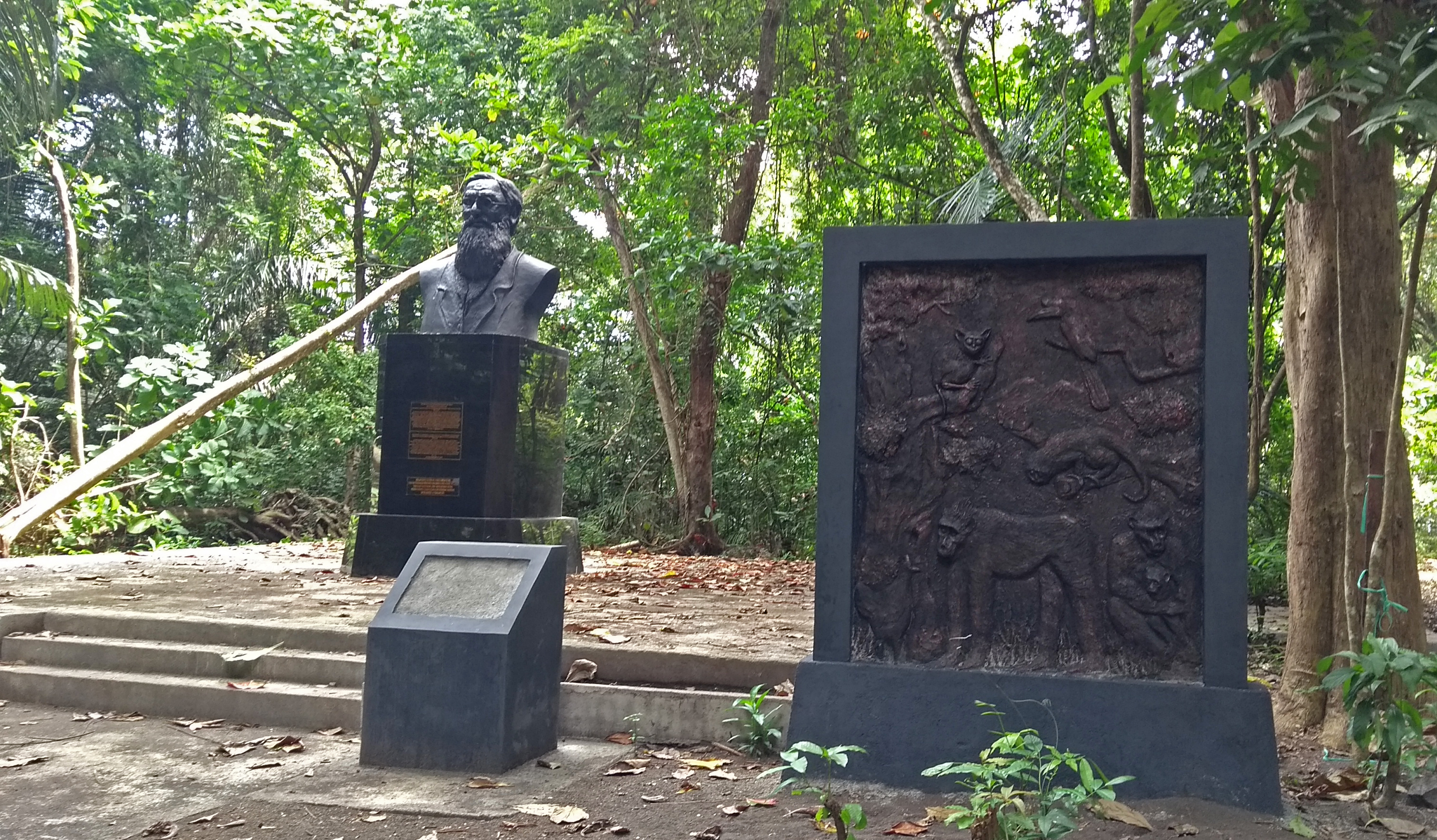
A very impressive 1.5 meter tall bust of Wallace on a 2.6 meter high plinth was inaugurated on the 21st February 2019 at the well known Tangkoko Nature Reserve in north-east Sulawesi, Indonesia. It is certainly the largest and most imposing monument to Wallace in the world so far. It is also the first bust or 3D likeness of him outside the UK and the first monument to him in Wallacea, the biogeographical region which is named in his honour.
Wallace visited the Tangkoko area in 1859 to collect specimens of the strange Maleo bird, which at that time came in large numbers to bury their eggs in the black sand of the beach. For this reason alone a monument to Wallace in Tangkoko would be appropriate. However, our recent research suggests that there may be an even more significant justification for having a statue of him there.
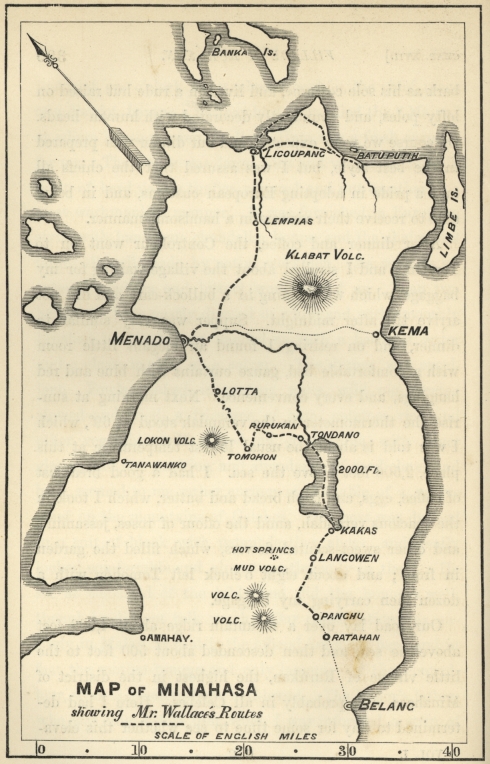
Map from The Malay Archipelago showing Wallace's route. Tangkoko Reserve is situated where it reads "Batu Putih".
In 1913 the Dutch Indies Society for the Protection of Nature (Nederlandsch-Indische Vereeniging tot Natuurbescherming) proposed that the Tangkoko-Batuangus area should be protected as a reserve on the basis of its fauna (Anoa, Babirusa and Maleo) as well as its flora. The Society had been founded the year before by the important botanist Dr Sijfert Koorders from Java, who was its chairman until his death. Shortly before he died in 1919 the Dutch colonial government declared Tangkoko-Batuangus as an official reserve for its “scientific value”, along with reserves in 53 other locations across what is now Indonesia.
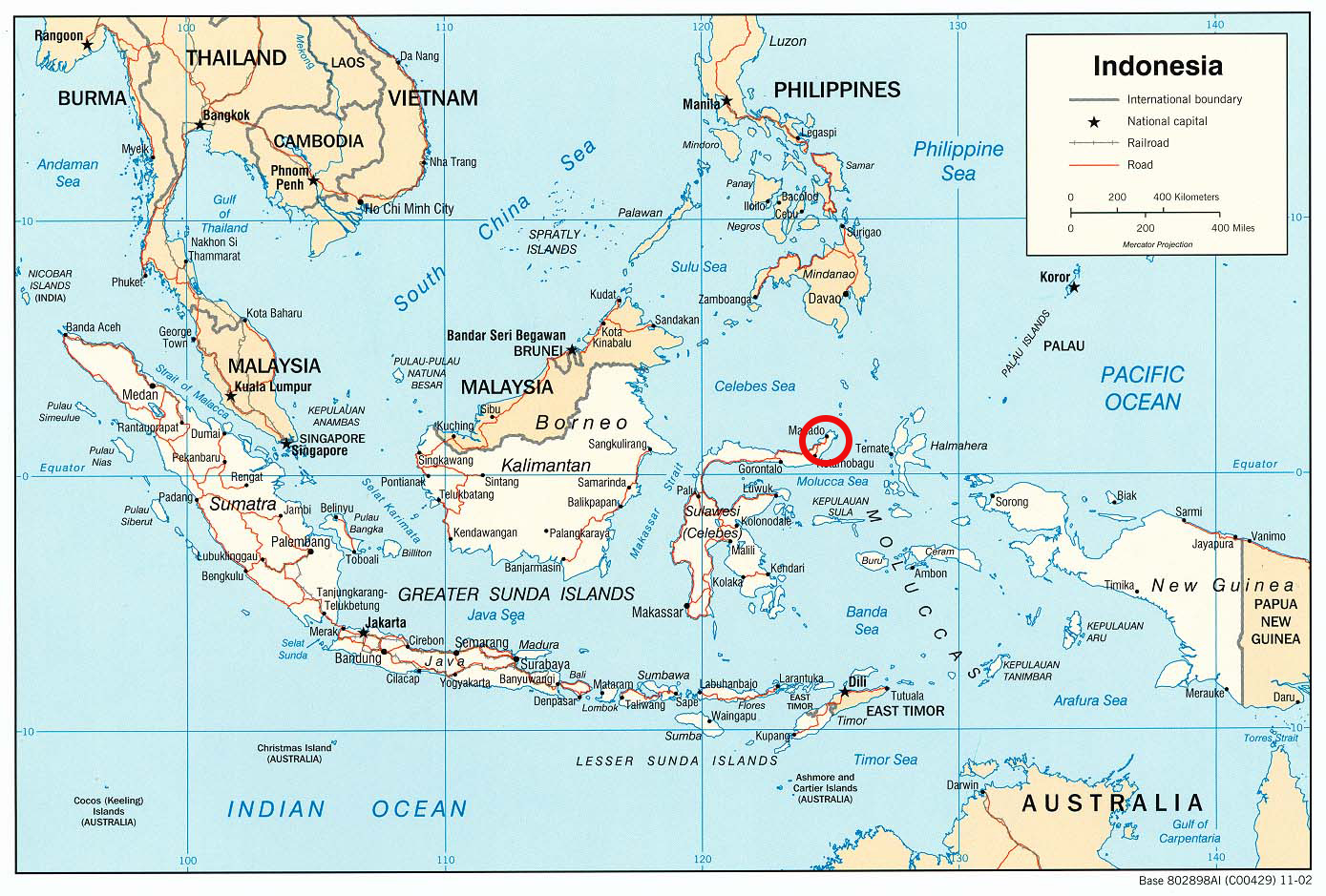
Location of Tangkoko Nature Reserve.
So why did the Society and Koorders select the Tangkoko area for protection out of all the many thousands of places in Indonesia which they could have chosen? Koorders travelled extensively in northern Sulawesi in 1894/5 (more than 30 years after Wallace), but he did not visit the Tangkoko area during his surveys of the Minahasa region. In 1898 he named a genus of trees he had collected during this trip Wallaceodendron in Wallace's honour, showing that he greatly admired him, probably largely as a result of reading his famous book The Malay Archipelago, which we know he studied along with other works by Wallace. This book, published 150 years ago in 1869, contains a detailed account of Wallace's visit to Batu Putih and describes how Maleo and rare Anoa and Babirusa were not uncommon there at the time. Wallace's book made the Tangkoko area famous and others were inspired to visit it as a result. One of these was the naturalist, writer and traveller Francis Henry Hill Guillemard (1852-1933) who travelled there in 1883 to collect Maleo. In his 1886 book The Cruise of the Marchesa to Kamschatka & New Guinea he even honoured Wallace's association with the area by coined the name "Wallace Bay" for the gulf on which Tangkoko is located. So it seems likely that the reason Koorders decided to propose the area as a reserve was because Wallace had drawn attention to the area and its rare animals. If this is true then Tangkoko-Batuangus Nature Reserve may not exist today if it had not been for Wallace.
Map from Guillemard's book showing Wallace Bay
Sadly Babirusa and Anoa are extinct in the area now, and Maleo are very rare and no longer nest on the beach. However, the reserve is a Mecca for birdwatchers and is famous for it's Tarsiers and rare Black Macaques, which are used to humans, so tourists can get very close to them.


Tarsier (left) and Black Macaque (right) photographed at Tangkoko. Copyright G. Beccaloni
The Wallace Memorial Fund and the Wallace family applaud the Mayor of Bitung, Maximilian Jonus Lomban, whose idea and initiative it was to erect this monument to commemorate Wallace's visit to Batuputih, and pay for it with city funds. We also salute the artist Hendra Susanto, and the team of people who saw the project through to completion. We are sure that visitors from Indonesia and around the World will greatly admire it and that the Black Macaques will enjoy climbing on it!

Map showing location of the Wallace monument. Produced by Simon Purser.
SPEECHES PRESENTED AT THE INAUGARATION OF THE MONUMENT ON 21ST FEBRUARY 2019
1) Speech by Alfred Russel Wallace's great grandson Bill.
2) Speech by Paul Smith, Director of the British Council in Jakarta, Indonesia.
ADDITIONAL PHOTOS
1) Photos by Hendra Susanto showing the making of the monument

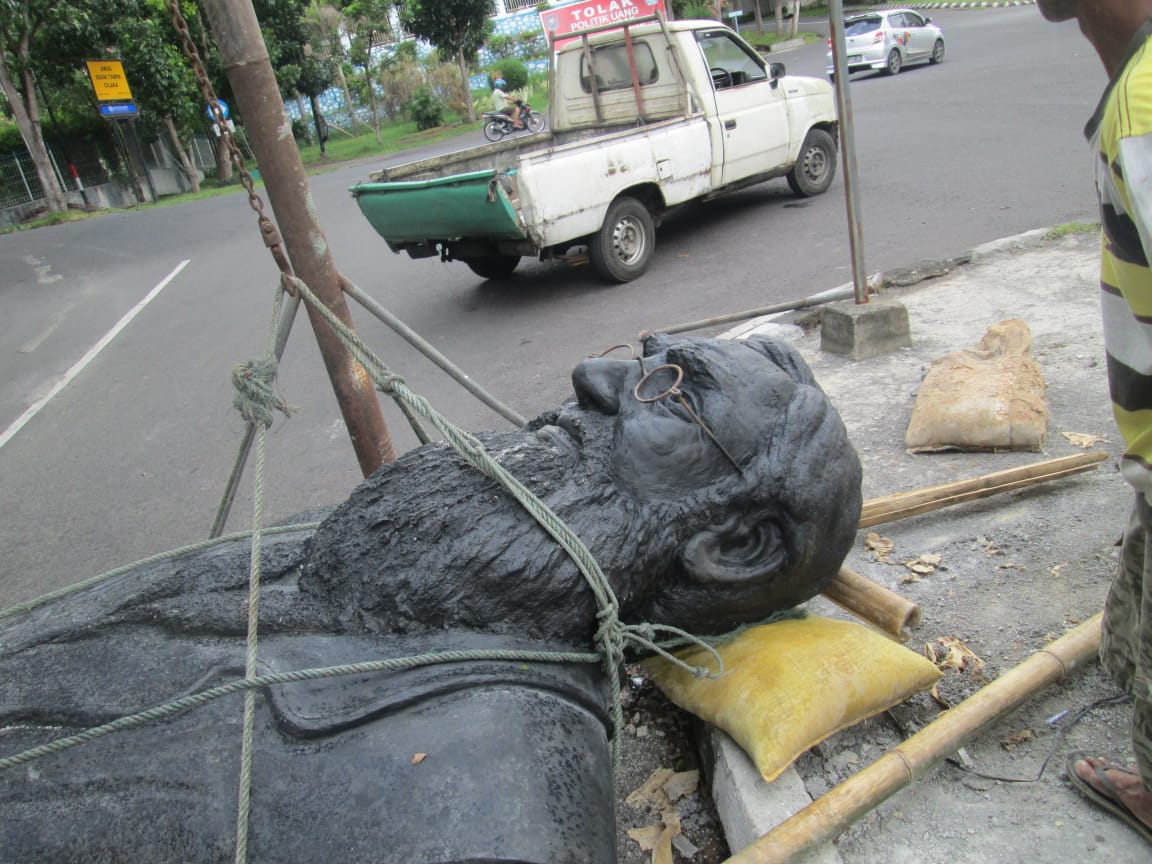
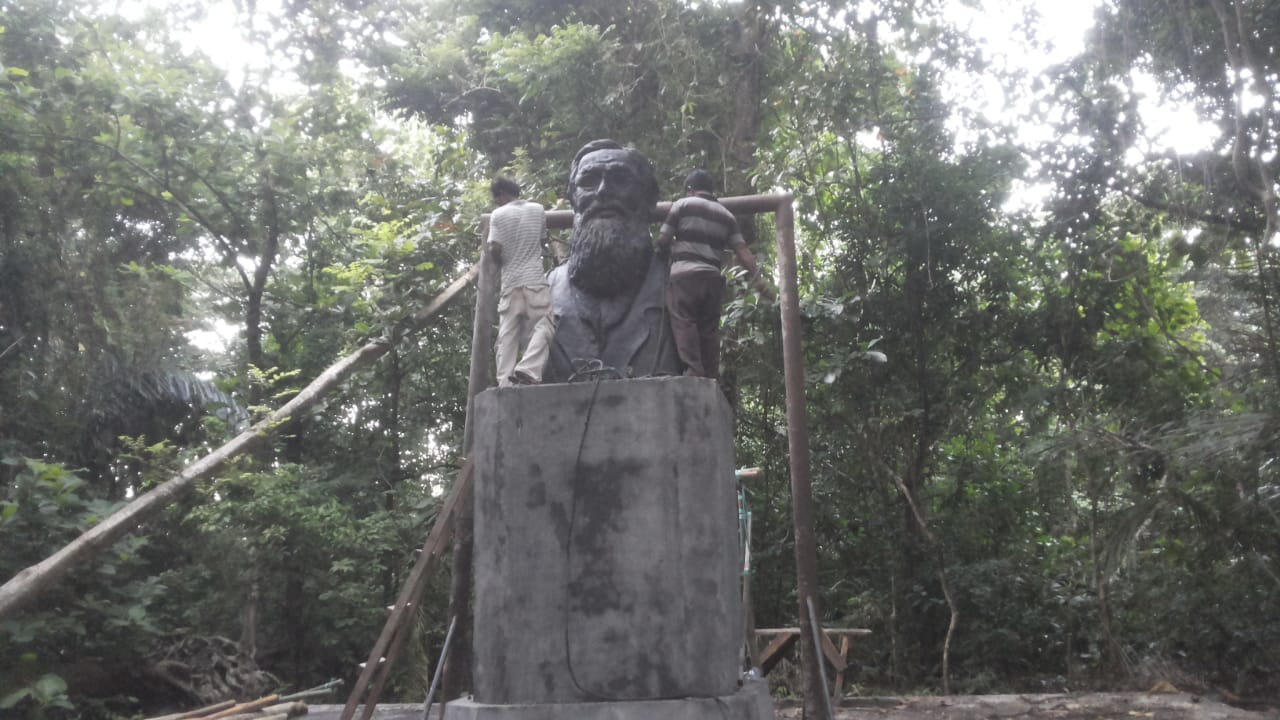


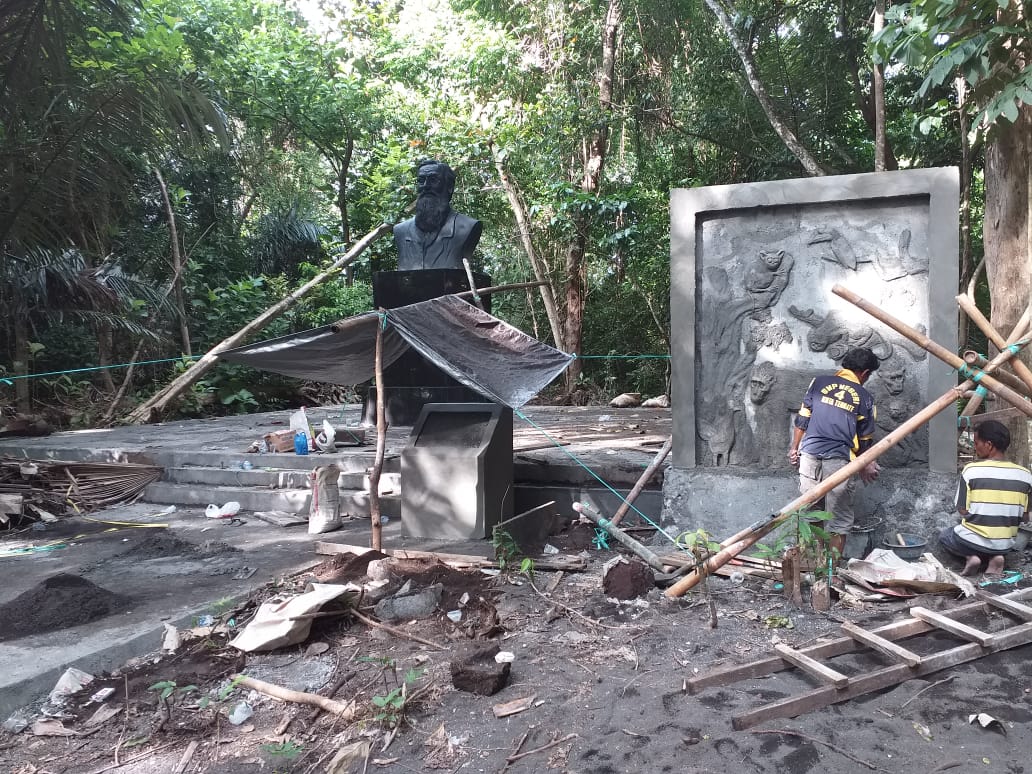
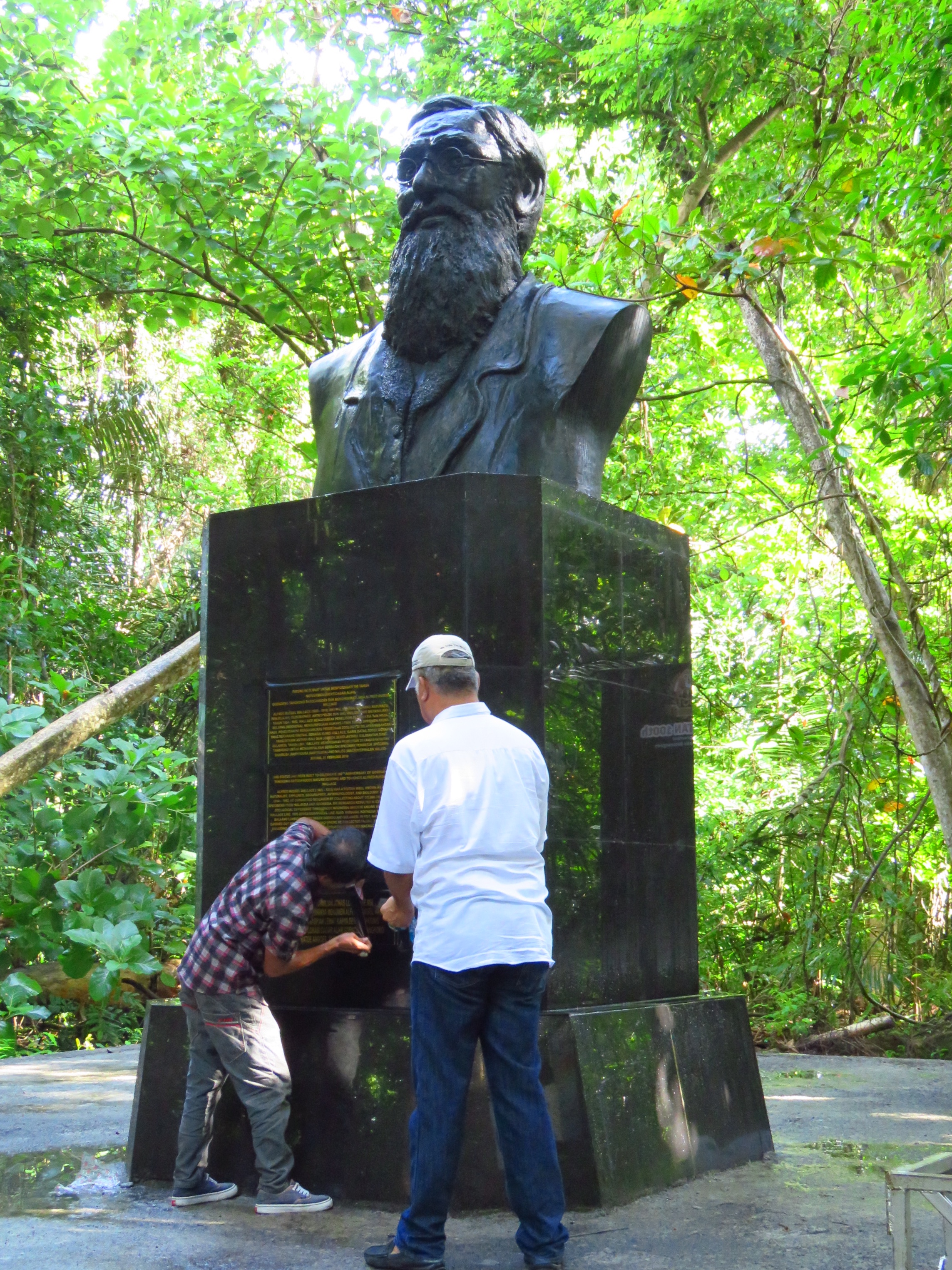
2). Photos taken at the inauguration ceremony
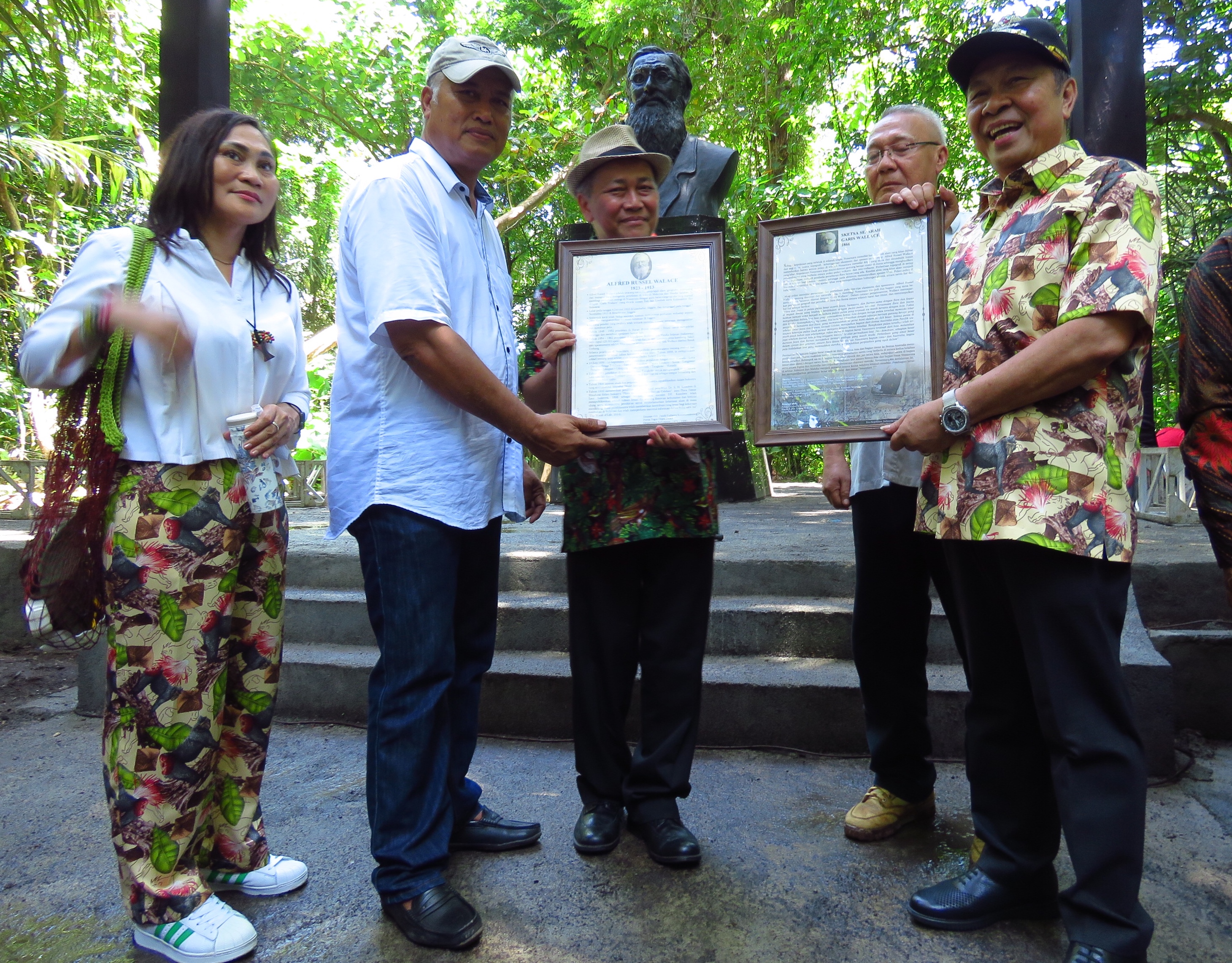
Director General applauds the mayor's efforts to preserve history by this moment and gives him some framed texts from the ministry historian, which explain ARW's contribution to science and relation to Indonesia. From left to right: Khouni Lomban, first lady of Bitung City and conservation ambassador; Hendra Susanto, artist and the creator of the monument; Pak Wiratno, Director General of Conservation of Natural Resources of the Ministry of Environment and Forestry; Pandji Yudistira, natural history and conservation historian at the Ministry of Environment and Forestry; Max Jonus Lomban, Mayor of Bitung and Initiator of the monument.

From left to right: Hendra Susanto; Ibu Dr. Farianna, Director of Bunaken National Park; unidentified lady; Pak Wiratno; Paul Smith, Director of the British Council in Jakarta.
Acknowledgements
Many thanks to Frank Hyde for supplying the photo of him looking up at monument (first image in top left of this page), and also the image of the monument on its concrete platform.
